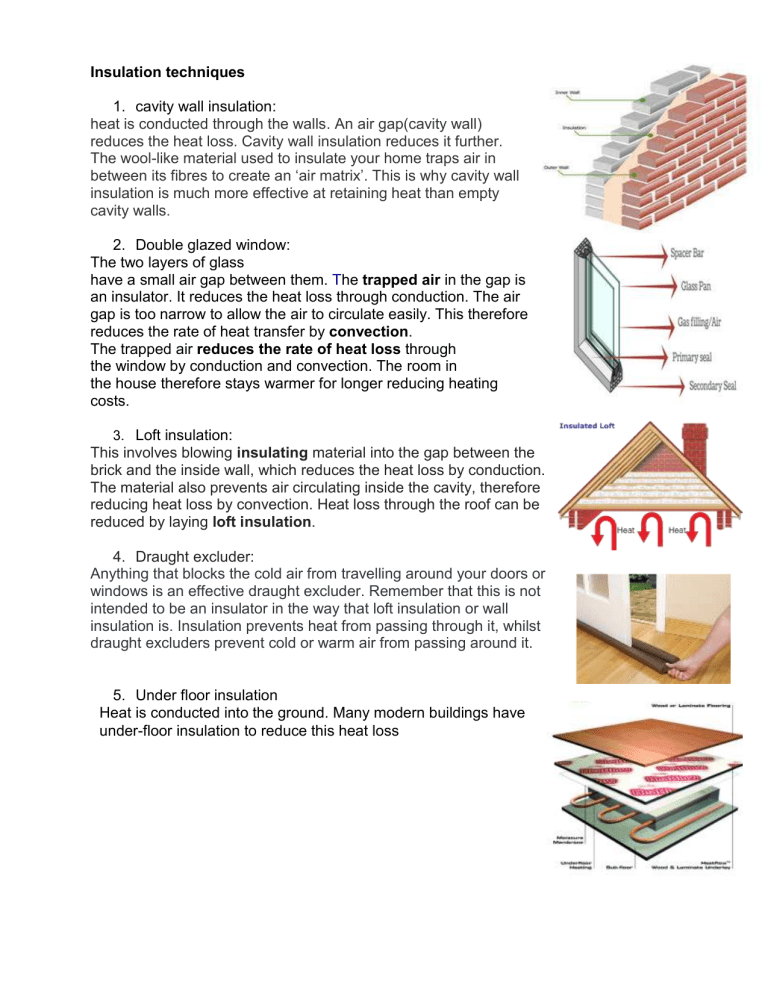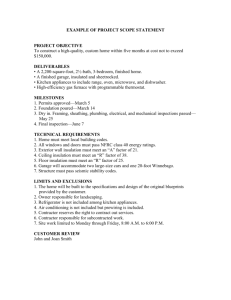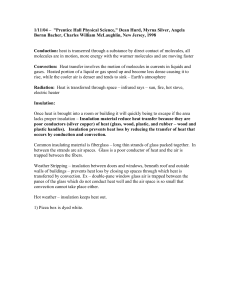
Insulation techniques 1. cavity wall insulation: heat is conducted through the walls. An air gap(cavity wall) reduces the heat loss. Cavity wall insulation reduces it further. The wool-like material used to insulate your home traps air in between its fibres to create an ‘air matrix’. This is why cavity wall insulation is much more effective at retaining heat than empty cavity walls. 2. Double glazed window: The two layers of glass have a small air gap between them. The trapped air in the gap is an insulator. It reduces the heat loss through conduction. The air gap is too narrow to allow the air to circulate easily. This therefore reduces the rate of heat transfer by convection. The trapped air reduces the rate of heat loss through the window by conduction and convection. The room in the house therefore stays warmer for longer reducing heating costs. 3. Loft insulation: This involves blowing insulating material into the gap between the brick and the inside wall, which reduces the heat loss by conduction. The material also prevents air circulating inside the cavity, therefore reducing heat loss by convection. Heat loss through the roof can be reduced by laying loft insulation. 4. Draught excluder: Anything that blocks the cold air from travelling around your doors or windows is an effective draught excluder. Remember that this is not intended to be an insulator in the way that loft insulation or wall insulation is. Insulation prevents heat from passing through it, whilst draught excluders prevent cold or warm air from passing around it. 5. Under floor insulation Heat is conducted into the ground. Many modern buildings have under-floor insulation to reduce this heat loss Heat loss from a badly insulated house is shown in the picture. Write down few ways to reduce heat loss. Briefly describe how they work?

